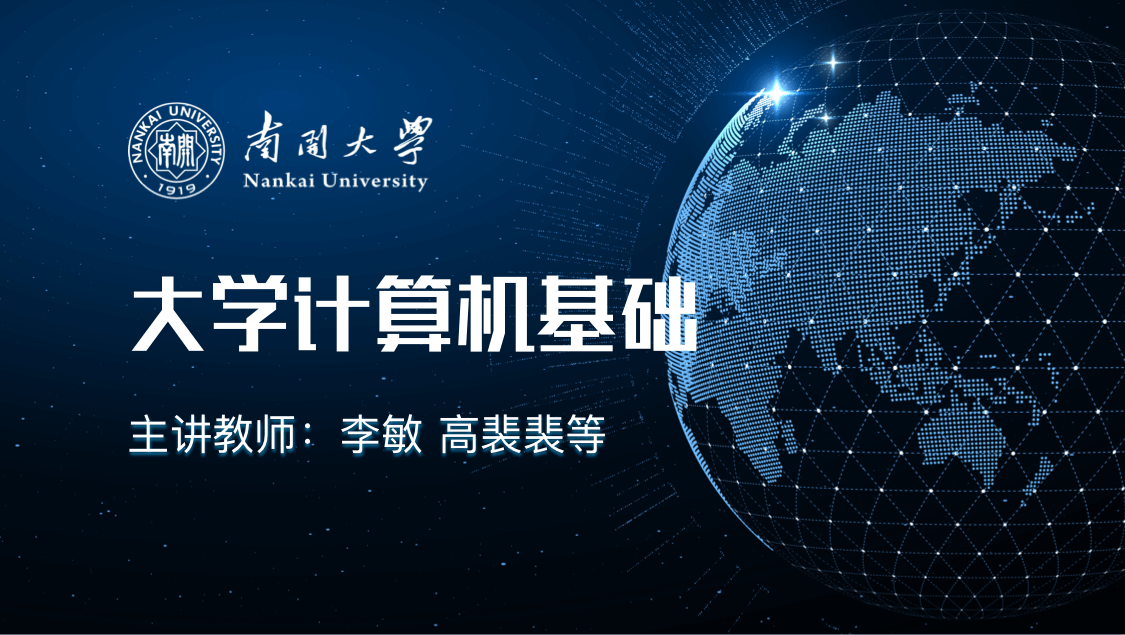
当前课程知识点:e时代的新课堂——在线教育概论 > 第二章 为什么做在线教育 > 2.2.3多模态数据分析学生学习行为与需求 > 2.2.3多模态数据分析学生学习行为与需求
我们用在线教育的方式来学习的时候
When we engage in online education,
教与学过程的数据
the data of the teaching and learning process
都会被大多数平台
is recorded by
自动的这样的记录下来
most platforms automatically.
当学生在线学习的时候
When students learn online,
目前大多数的在线教育的平台
most online education platforms
都能够很好地采集和记录
do well in collecting and recording
教与学过程的数据
the data of the teaching and learning process.
那这一点
At In this point,
是与传统教学模式很不同的
it is very different from the traditional teaching mode.
那么在这样一个在线学习的过程中
So, in the online learning process,
积累下来这些教与学数据以后
after the data from teaching and learning is accumulated,
我们就可以用学习分析技术
we can use learning analysis technology
对这些学习大数据呢进行分析
to analyze the Big Data behind learning.
这样的话就可以
In this way,
从这种学习分析的结果看出
from the results of learning analysis, we can find out
学生的学习习惯
what students' learning habits are,
他的过程他的学习效果等等
their learning processes, their learning effect and so on.
这样一些分析结果
Such results
对于反馈给教学系统
are very useful feedback
或者反馈给老师以后
for the teaching system
都是非常有用的
and the for teachers.
那接下来
Next,
我们来请吴老师给我们讲一讲
let's invite Mr. Wu to talk about
在在线学习过程中
how to execute learning analysis
我们怎么样对这些教与学数据
comprised of the data from teaching and learning data
进行学习分析
in the online learning process
通过学习分析
and obtain the information of learners' needs
来获得学习者的学习需求
through analysis.
好的
Okay.
这上面有一张图
Let's take a look at a diagram.
这张图也是某一篇发表的
This diagram comes from a thesis
C刊的论文里面的
published in an academic journal in the CSSCI.
这个方面我们看出
From this, we can see that
就是学习分析是整个里面的一个
learning analysis is a core analysis technology
对教育学习过程所留下的痕迹
in analyzing traces of the teaching and learning process,
特别是学习的行为动作
especially students' learning behaviors
作为分析的一个非常核心的一个技术
in the whole process.
有一个非常有名的报告叫地平线报告
There is a very famous report called the Horizon Report.
连续从2010年到现在
From 2010 to the present,
连续大概6、7年的时间里
within six or seven consecutive years,
把学习分析作为一个非常专业的技术
learning analysis has been used as a professional technology.
那么现在我们在在线课程中
The During the learning process of online courses,
特别是慕课过程中学习过程中
especially in the learning process o ffor MOOCs,
留下了一丝痕迹
leave some traces,
这些痕迹我们就称为叫学习的行为动作
which we call learning behaviors.
这个动作就是我们学习者留下的那些特征
The behaviors are the features that learners leave behind.
在上面就体现出来
They are shown in the diagram.
比如像这个学生他在网上看视频
For example, when the student watches online videos,
他看视频里面他喜欢
does he like watching them
是从头到尾看
from the beginning to the end,
还是中间看的时候有些跳跃的东西
or from the middle by skimming skimming in the middle?
另外还有在里面看到里面的看法不看[意思不明确]
Besides, he may ignore skip something.
那这个里面看出来我们就可以知道
From this, we can know that
这门课里面的不同的人
the degree of mastery of the course
他的掌握的程度不一样的
varies from person to person.
比如像那个同学里面他反复看
For example, if the student repeatedly watches something,
那证明这个
it proves that
他对这个知识点的掌握程度
he may have not mastered
可能是没有那么很好的了解
the knowledge point very well.
这个里面就抓住了
So the learning characteristics
某一个人或者某一类人
of an individual, people of a type,
以及大规模的人群
or a massive group of people
在里面学习的一些特征出来
are reflected through the data
那这样就更好地精准地
so that weit can better and more accurately facilitate students' learning better
帮助学生学习
students' learningand accurately.
那所以在这里面
Therefore,
我们通过学习的分析能够
through learning analysis, we can
把慕课过程中
analyze the data generated and recorded
所生成记录下来的数据进行分析
in the process of MOOCs,
来把控能够反馈
control the teaching process, and receive feedback
更好地指导学生的学习
to better guide students' learning
也帮助我们的老师来能够进行
and help teachers carry out
差异化的教学
differentiated teaching approaches.
那除了刚才我们讲的这个
In addition to the data generated
慕课过程中产生的这些数据以外
in the process of MOOCs as we talked about just now,
那么现在我们走向了
we’ve moved towards
学习分析走向一个叫
a direction called
多模态的学习的东西
multimodal learning analysis.
因为我们也知道
As we know,
就假如一个学生
if a student
他的学习情绪不好的情况下
is not in a good mood while learning,
他的学习效率就不高
his learning efficiency will decrease not be high.
那现在我们就学习分析里面
In learning analysis,
通过一定的技术
with certain technology,
比如像通过我们的脸型的识别
for example, using face recognition
以及眼睛的捕捉这些动作
and capturing eyeseye tracking,
能够获知学生的他的心理状况
we can get to know students' psychological situations.
那这个里面就是学生的他的
That is to say,
心理的数据
students’ psychological data
也能够获取过来
can also be obtained.
通过一些我们的传感的设备
Through sensing devices,
可以获知到学生的一些生理数据
we can get students’ physiological data.
那这些数据结合起来
When the data is combined,
我们叫多模态的数据
we call it multimodal data.
那就涉及到我们的
It involves
心理 生理和行为的数据
psychological, physiological and behavioral data.
也就是说
In other words,
通过我们这样的
Through such a comprehensive
一个综合的意思系统里面
and intelligent system
作为智能化的
of meaningssystem,
越来越了解学生他的
we can know more about the students'
真实的一个学习的状况
real learning situations,
包括他知识状况
including their knowledge situations,
他的所触及的心理心情状况
psychological situations
包括他生理状况
and physiological situations.
这样就是把我们的学习者作为一个
In this case, learners are considered as
完完整整的一个人来进行学习
whole persons,
这样他的学习的针对性
so their learning is targeted
和他的学习效率就会大为提高
and their learning efficiency will greatly be improved greatly.
那这个是以我们期待的
That is the multimodal learning analysis technology
基于学习分析多模态的技术
we have expected.
能够促进我们的慕课的
It can promote MOOCs
更好的能帮助
and facilitate
我们的教学和学生的个性化的学习
teachers' teaching and as well as students' personalized learning.
以前我们在传统课堂上
In traditional classrooms,
同学们听课的时候
when the students were attending classes,
有经验的老师都会去看看学生的表情
experienced teachers would pay attention to the students' expressions.
看着学生听得很愉悦的
When the students were happily listening happily,
我们就可以往前进行下一项了
they could move on.
看着学生们都一脸困惑
While the students looked puzzled,
皱着眉头在那不知所云
and frowned, without what the teachers said
或者你问问题也没人回答
with no one responding to teachers’or answering their questions,
那我们老师就知道
then the teachers would realize that
噢 这段内容比较难
the content was difficult
我还要再慢慢多讲一讲
and they needed to lecture slowly and explain more.
我们可能以为在线学习的时候
We may believe that in the process of online learning,
我们不管对着屏幕给个啥表情
no matter what facial expression the students face the screen withdemonstrate to the screen,
那端的老师都不知道的
the teacher on the other side doesn't know.
其实以后技术发展了
In fact, as technology develops,
可能现在在有些系统里头
perhaps there have been related applications
也已经用上了
in some systems.
做表情的时候
When you are doing facial expressions,
如果你这个系统摄像头开着
if the system camera of the system is on,
可以采集你的表情
your expressions can be collected.
那么这个实际上就反馈过去了
So, in fact, the feedback is given to
同样那一端的老师
the teacher on the other side.
从学习数据分析的角度
From the perspective of learning data analysis,
也能看到有多少学生是
we can see how many students
以什么样的心情在学这门课
are learning the course with a certainwhat mood.
所以希望大家学习慕课的时候
So we hope when you are learning MOOCs,
还是开开心心地学
you will learn happily.
当然了有不开心的表情
Of course, if you have unhappy expressions,
老师事后也会从数据中捕捉到
teachers will capture them from the data after class,
然后可能会给同学们更多的一些帮助
and may offer more help to the students
或者调整课程内容
or adjust the course content.
这个真是的非常有意思的一件事
This is something really interesting.
是的
Yes.
那第一个就是我们体现的
The first is what we’ve shown,
就是我们现在讲的
the platform of MOOCs
慕课平台或者我们的在线学习系统
or online learning system,
它的智能化
an intelligent
或者叫自适应的一个系统
or self-adaptive system.
那自适应系统就体现刚才讲到的智能
The self-adaptive system is intelligent like we talked about.
可能越来越多现在
Perhaps, as there are more
我们提供网上学习
chances of online learning providedopportunities,
我们感觉到老师跟学生有距离
we feel that there is distance between teachers and students.
那通过这种智能化的一些系统
Through intelligent systems
或者智能代理的东西
or intelligent agents,
能够捕捉学生的
we can capture students'
他的真正的学习的需求
real learning needs,
不光是知识层面的
which include not only their needs of knowledge,
他们心情各种状况
but also their moods and other situations,
及时的能够调整更适应他的学习
so that we can make timely adjustments to adapt to their learning.
也就是说我们老师越来越多了
In other words, perhaps teachers are using
可能有一种学习的一些工具
some increasingly using more and more tools more increasingly,
那就像当医生一样的
just as doctors,
医生比如讲对病人了解情况
who can know about patients' situation, for example,
有一个叫CT
through CT (computed tomography) scans.
那我们教育里面如果有这样一个CT
In education, if there is something like CT,
那就更好的帮助我们的教师的教与学
then it can definitely facilitate teachers' teaching and students' learning.
-混合式教学该怎么做?与清华老师一起聊聊
-看清华老师如何进行大班混合式教学
--Video
-如何做好混合式课堂的互动
--Video
-与清华大学老师聊聊慕课独特的教学设计
-“挑战60s”授课短视频大赛
--Video
-与清华大学老师聊聊慕课的制作与运营
--Video
-1.1在线教育发展现状
--html
-1.1.1在线教育带来了e时代的新课堂
-1.1.2师生说
--1.1.2师生说
-1.1.3我国在线教育的特点
-1.2什么是在线教育
--html
-1.2.1概念解析
-1.2.2教育的技术发展史
-1.2.3在线教育的五要素模型
-1.3在线教育对教师的机遇与挑战
--html
-1.3.1机遇篇
--1.3.1机遇篇
-1.3.2挑战篇
--1.3.2挑战篇
-1.4在线教育发展的历史
--html
-1.4.1二十世纪的发展
-1.4.2二十一世纪的发展
-1.4.3在线课程三要素
-1.4.4虚拟教育组织
-1.5课程内部体系和外部关系
-第一章 解读在线教育--单元习题
-讨论题
-2.1数字时代带来教育变革
-2.2在线教育更适应学生的学习需求
--html
-2.2.1教育需求的发展
-2.2.2学习风格与学习类型
-2.2.3多模态数据分析学生学习行为与需求
-2.2.4教育目标
-2.2.5拓展学习时空,促进深度学习
-2.2.6自主学习系统的案例分享
-2.3在线教育帮助教师成长
-2.4学校和国家为什么要做在线教育
-单元习题--作业
-3.1高等学校在线教育发展
-3.1.1学校现状
-3.1.2平台与联盟
-3.2不同类型的教师都能得益于混合式教学
-3.3混合式教学的好处
-3.3.1当前的教学问题
-3.3.2教师和学生的收益
-3.4混合式教学的关键细节与常见误解
-3.4.1关键细节一
-3.4.2关键细节二
-3.4.3关键细节三
-3.4.4误解篇一
-3.4.5误解篇二
-3.5智慧教学工具的发展
-3.5.1综述篇
--3.5.1综述篇
-3.5.2雨课堂的诞生
-3.5.3雨课堂的功能
-3.5.4课堂教学需要雨课堂
-3.5.5雨课堂解决面授时间紧张的问题
-3.5.6雨课堂解决课前课中课后的学习效果问题
-3.5.7课前课中课后雨课件设计要点
-第三章 高校在线教育进行时--单元习题
-讨论题
-讨论题
-4.1教育实践的展望(一) 教育创新
-4.2教育实践的创新(二) 教育技术与决策
-4.3教育理论的热点趋势
-第四章 在线教育的未来--单元习题
-讨论题
-5.1邓俊辉老师《数据结构》与《计算几何》教学案例
--html
-5.1.1慕课制作与使用心得(一)
-5.1.2慕课制作与使用心得(二)
-5.2张瑜老师《思想道德修养与法律基础》教学案例
--html
-5.2.1教学理念与混合式教学的主要环节
--Video
-5.2.2章节实例
-5.3杨芳老师《大学英语》教学案例
--html
-5.3.1混合式教学设计心得
-5.3.2 University单元教学设计
-5.4于歆杰老师《电路原理》教学案例
--html
-5.4.1小容量班级完全翻转课堂
-5.4.2大容量班级部分翻转课堂
-5.5郑莉老师《C++语言》教学案例 雨课件样例及校内教学心得分享
--Video
-单元习题--作业





